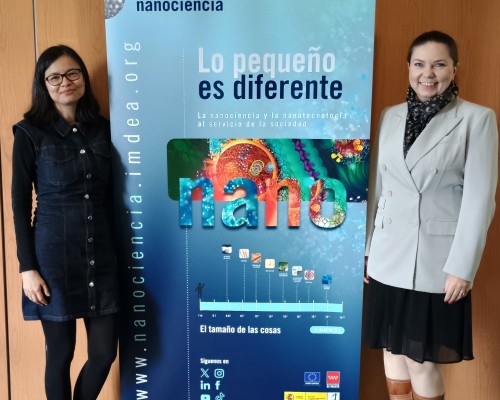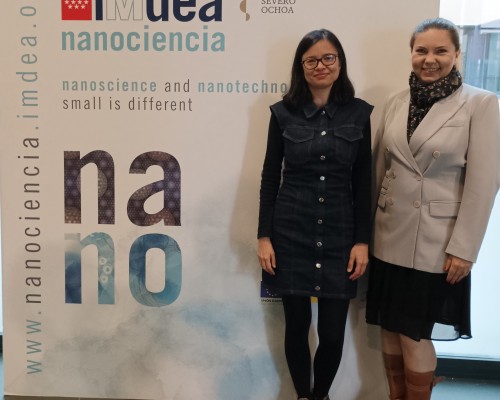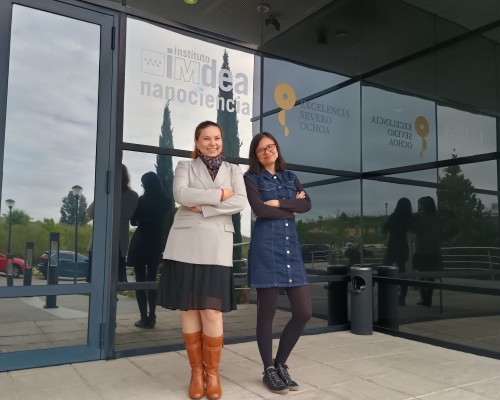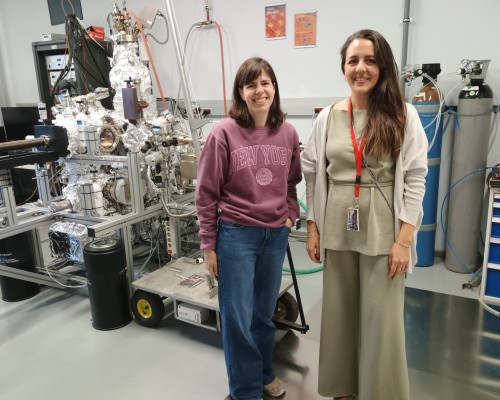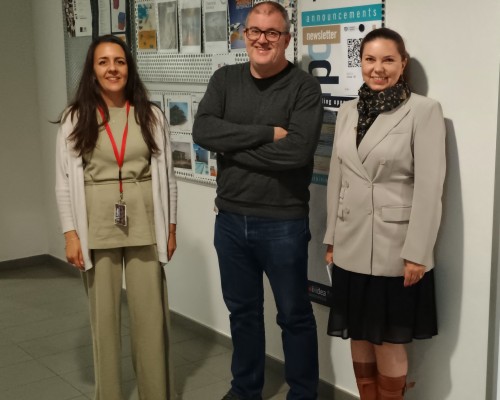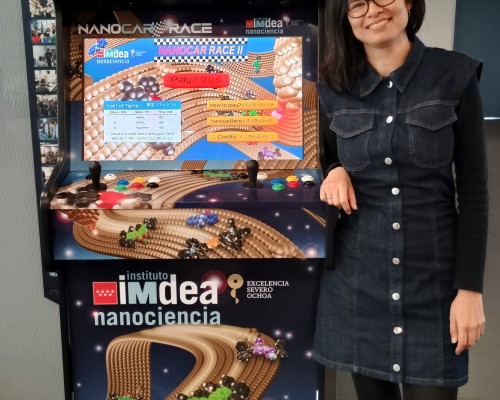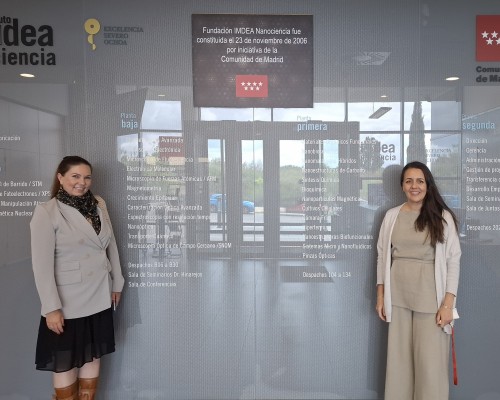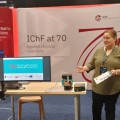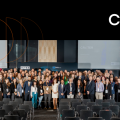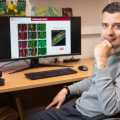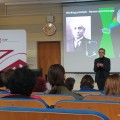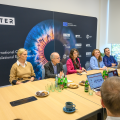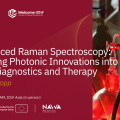Exploring best practices in scientific communication: job shadowing visit by IChF’s PR Manager at Instituto IMDEA Nanociencia in Madrid
Reading time: about 6 minuts
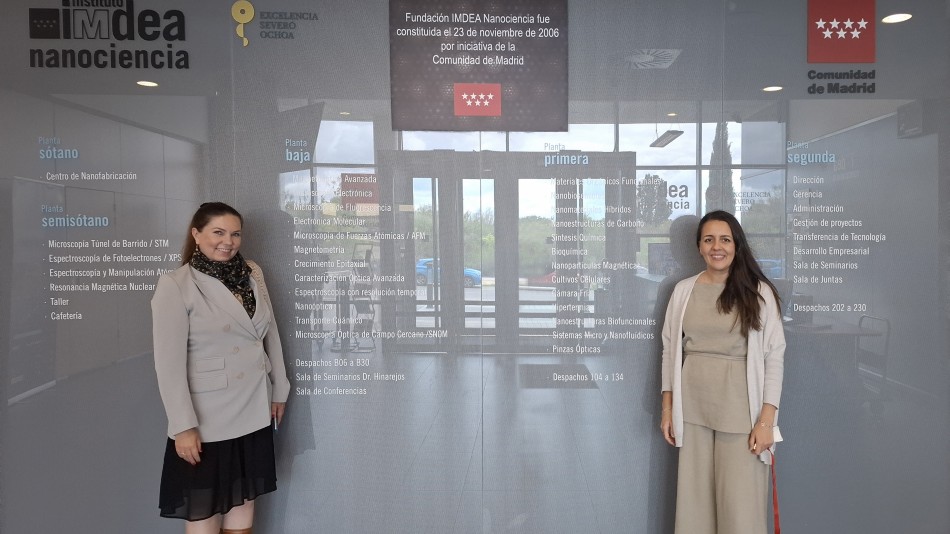
On 9th May, 2025, Dr. Anna Przybyło-Józefowicz, Communication and PR Manager at the Institute of Physical Chemistry, Polish Academy of Sciences (IChF), participated in a job shadowing program at the Spanish Institute IMDEA Nanociencia. The visit was part of IChF’s ongoing commitment to advancing science communication through direct engagement with other high-performing research institutions across borders in building and implementing innovative communication frameworks.
The experience was made possible thanks to the initiative and support of Prof. Cristina Flors, Group Leader at IMDEA Nanociencia and member of the IChF International Advisory Board, who opened the doors to this exchange, welcomed Anna to the institute, and offered an introduction to its scientific ecosystem and interdisciplinary environment.
IMDEA Nanociencia (nanociencia.imdea.org) is a leading interdisciplinary research centre in Spain, dedicated to advancing nanoscience and developing nanotechnology applications. Recognized as a Severo Ochoa Centre of Excellence, the institute hosts over 40 research laboratories and focuses on areas such as energy harvesting, quantum materials, nanomedicine, and sustainable nanotechnologies. Its mission encompasses both fundamental research and translating scientific advances into societal benefits, fostering innovation and cross-disciplinary collaboration. Established in 2006 through a collaboration between the regional government of Comunidad de Madrid and the Spanish Ministry of Education and Science, IMDEA Nanociencia operates as a private non-profit foundation within the IMDEA Institutes ecosystem. It is also a member of the Campus of International Excellence, a consortium promoted by the Autonomous University of Madrid and the Spanish National Research Council (UAM/CSIC).
The shadowing itself was hosted by Dr. Elena Alonso, Head of Communication, who offered Anna an in-depth, immersive look into the day-to-day reality of science communication at IMDEA Nanociencia. After a full tour of the facilities and introductions to staff members, Anna followed Elena through her work—discussing workflows, methodologies, and the philosophy behind their approach.
Throughout the visit, Anna gained deep insight into the many dimensions of communication at IMDEA Nanociencia. She observed how PhD, PostDoc and PI recruitment campaigns are developed and promoted—particularly those supported by Marie Skłodowska-Curie COFUND programme; how newsletters are designed to inform and inspire diverse institutional audiences; how social media strategies, graphics, and videos are coordinated to enhance scientific visibility; and how soft skills training and gender equality initiatives are embedded into the communication structure. Elena also discussed science outreach initiatives, segmented by audience groups (children, seniors, general public), and shared the institute’s internal communication mechanisms, including how press notes are developed, how the annual report is produced with input from researchers and administration, and how alumni relations are maintained. She emphasized the Institute’s dedication to bridging science and culture by fostering synergies that enhance public understanding, spark curiosity, and broaden the cultural experience of science—in line with the objectives of the projects funded by the Spanish Foundation for Science and Technology (FECYT).
Later in the day, Anna was introduced to Dr. Mark Davies, Head of Translational Projects, who presented the IMDEA Nanociencia broader institutional strategy. He shared the vision, goals, and recent achievements of the Project’s Office, anchored in three pillars: attracting talent, supporting research, and advancing open science. Within this framework, the Communication Office plays an integral role in enhancing the institute’s visibility, outreach, and engagement. Dr. Davies also discussed ongoing priorities and expressed IMDEA Nanociencia’s openness to future cooperation with IChF—particularly through joint EU and industrial project applications, as well as researcher exchange initiatives —highlighting shared values and complementary strengths between the two institutions.
The visit concluded with a reflective conversation between Elena and Anna, during which they exchanged perspectives on how science communication evolves within institutions—not only through formal training or tools, but through shared experiences, values, individual aspirations, personal strengths, dreams, and everyday choices. They agreed that meaningful growth in this field often comes from learning alongside peers—through open dialogue, mutual observation, and the willingness to connect across institutional boundaries.
As Elena Alonso, who holds a PhD in Physical Sciences, observed:
“There is enormous potential in science communication—people are genuinely eager to understand what science is. We tend to lose them when we use scientific jargon or overly technical concepts, but the truth is that people are truly interested in science. And I believe that if we can bring them closer in a way that allows them to feel the same fascination and passion with which we live science, it can be something very beneficial for everyone.
Why do I think people are interested in science? Because everyone wants to understand the world we live in—how things work. Why do plants photosynthesize? Why do solar cells absorb energy and transform it into electricity, for example? How does that work? Can it be improved? All those questions are answered by science. And people are eager to learn about these things.
If we explain it in the right way, it’s incredibly valuable for them—because they gain a better understanding of the world, they feel wonder for what we do, and in turn, our work becomes more visible and appreciated.
In the nanoscopic world, we often say that when someone gets to know it, they are immersing themselves—and we say immerse because you're entering an extremely small scale. In that world, different laws of physics come into play—quantum mechanics, which is quite exotic. Things happen that are counterintuitive, that don’t occur in the macroscopic world. So, I would invite people to dive with us into the nanoworld and discover everything we have to offer.”
Reflecting on the day, Dr. Anna Przybyło-Józefowicz shared:
“There are professional experiences that add new depth and dimension to the way you relate to your field. This was one of them.
International job shadowing is a practice that deserves far greater attention in the world of science communication. It offers a rare opportunity to inhabit someone else’s professional landscape—not only to see what they do, but to understand how they think, how they organize meaning, and how they connect science with society.
I’m grateful to Prof. Cristina Flors for making this exchange possible, to Dr. Elena Alonso for her openness, clarity, and the generous way she shared her work, and to Dr. Mark Davies for providing a broader perspective on how communication and research advance together within a unified institutional framework.
Encounters like this don’t just enrich—they reorient. The value of this exchange now travels with me—back to IChF in Poland—where it will nourish my work with new knowledge, insight, and direction.
To be welcomed into the inner workings of IMDEA Nanociencia was a true privilege, and I feel fortunate to have had this opportunity.”
The Institute of Physical Chemistry, Polish Academy of Sciences sincerely thanks the team of Instituto IMDEA Nanociencia for their hospitality and engagement in receiving our Communication and PR Manager during this valuable professional exchange.
Text: IChF's PR team in cooperation with IMDEA Nanociencia
- Author: IChF's PR team in cooperation with IMDEA Nanociencia
- Date: 21.05.2025
